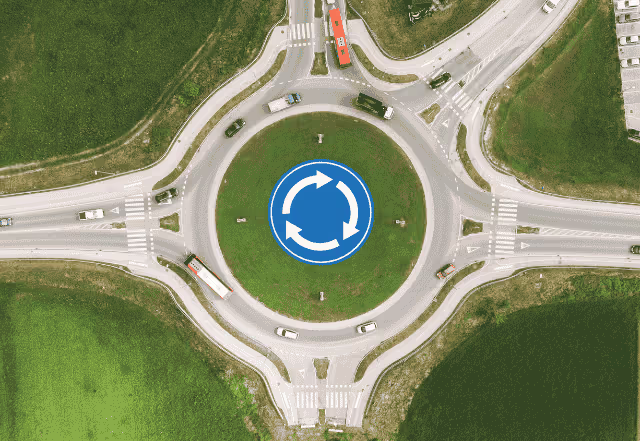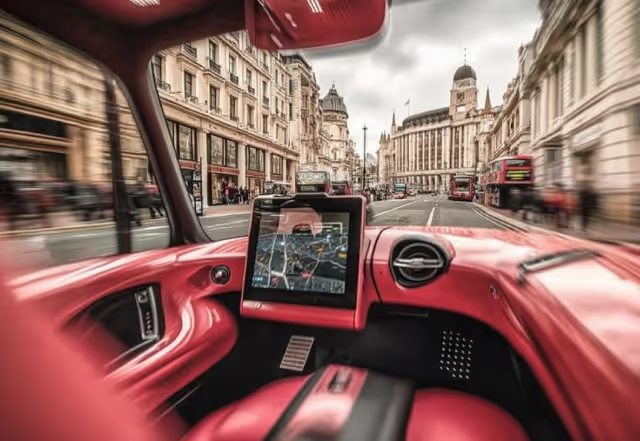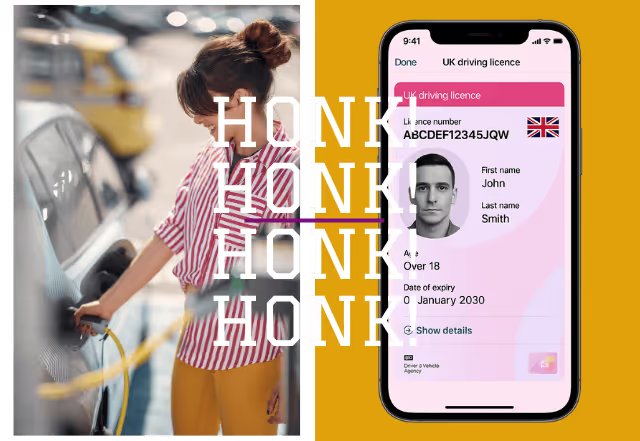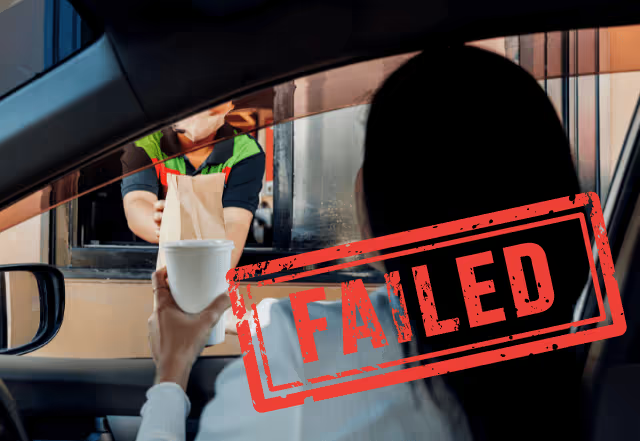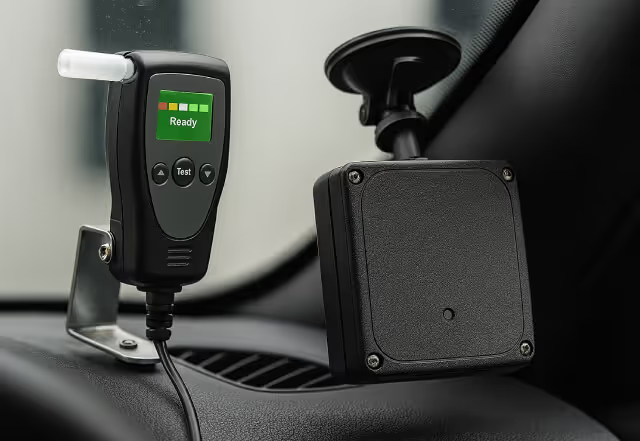How to approach a roundabout? Do you let go of the gas before you arrive? What gear do you need when entering a roundabout? For many drivers, roundabouts are a source of stress, especially in the United Kingdom, where they seem to pop up around every corner. If we take numbers of roundabouts, then UK is number two in the world - following France who has even more. But the French are driving the wrong way anyway, right. Whether you’re a new driver, visiting from abroad, or simply need a refresher, mastering the roundabout is an important skill. Once you get the hang of how to turn your brain and the wheel, roundabouts can actually be safer and more efficient than traditional intersections. But it takes the right approach to navigate them confidently.
Let’s turn to the whats & hows.
Why Roundabouts?
Roundabouts are designed to keep traffic moving while reducing the likelihood of accidents. Here’s why they’re becoming more common:
- Improved Traffic Flow: Unlike traffic lights, roundabouts keep vehicles moving continuously, which reduces congestion and delays. Drivers yield instead of stopping, which means less waiting around.
- Fewer Severe Accidents: Studies show that roundabouts lead to fewer severe accidents because they eliminate head-on collisions and T-bone crashes. Vehicles are traveling in the same direction, reducing the impact of collisions.
- Psychological Ease (Once You’re Used to It): While roundabouts might seem scary at first, many drivers report feeling less stressed once they’ve mastered them. Without the pressure of waiting for a green light or rushing to beat the red, driving becomes more fluid.
The Basics of Navigating a Roundabout in the UK
In the UK, roundabouts are a common part of the beautiful landscape. So you better get comfortable with them. Here’s a step-by-step guide to help you approach, enter, and exit roundabouts with confidence.
1. Approach with Caution
As you approach a roundabout, slow down and look for signs indicating the layout of the roundabout ahead. In the UK, you’ll typically see a circular diagram that shows the exits, along with a blue arrow pointing left to remind you to keep left.
- Check for Traffic: Look to your right for oncoming traffic. In the UK, vehicles already in the roundabout have the right of way. If the roundabout is clear, proceed without stopping. If there’s traffic, yield and wait for a safe gap.
- Stay in the Correct Lane: Larger roundabouts often have multiple lanes. If you’re taking the first exit (usually left), stay in the left lane. For the second or third exits, use the right lane and gradually move to the left as you near your exit. Don’t forget to keep looking in your mirrors!
2. Entering the Roundabout
Once you’ve identified a safe gap in traffic, smoothly enter the roundabout. This is where many drivers feel pressure, but staying calm is key. Keep in mind that entering too quickly or hesitating at the wrong moment can confuse other drivers.
- Signal Correctly: Signaling is crucial when entering and exiting a roundabout. If you’re taking the first exit, signal left as you approach. For other exits, wait until you’ve passed the exit before yours, then signal left to indicate your intention to leave. So your fellow drivers know what you’re up to and can take accordingly react to your action and keep the flow going.
- Speed Control: Maintain a steady speed inside the roundabout. Remember, most roundabouts have a speed limit of around 20-30 mph. Slowing down too much can disrupt the flow, while speeding could make it difficult to exit smoothly. Just go with the flow.
3. Exiting the Roundabout
Once you’ve navigated the roundabout and reached your exit, signal left to indicate you’re leaving. Keep an eye on other drivers and cyclists, especially if the roundabout is busy. And yes, sometimes it does get busy..OMG..
- Check Mirrors: Before you exit, check your mirrors for cyclists, motorbikes, or cars that might be in your blind spot. Cyclists, in particular, often stay close to the curb, and it’s easy to miss them during busy traffic.
- Give Way to Pedestrians: If there are pedestrians at a designated crossing near the exit, stop and let them cross safely before continuing your journey.
Common Mistakes to Avoid on Roundabouts
Mastering roundabouts involves not just knowing what to do but also avoiding common mistakes. Here are some pitfalls to watch out for:
- Failing to Signal: Not signaling when entering or exiting a roundabout is one of the most frequent mistakes drivers make. It can confuse other drivers and lead to unnecessary delays or accidents. Always use your indicators to communicate your intentions.
- Overcomplicating Lane Choice: On larger roundabouts with multiple lanes, it’s easy to get flustered. Remember the simple rule: left lane for left exits, right lane for straight and right exits. If you miss your exit, don’t panic—just continue around the roundabout and try again.
- Stopping in the Roundabout: Roundabouts are designed for continuous flow, so avoid stopping unnecessarily inside the circle. If you’re unsure, it’s better to continue driving around until you feel confident about your exit.
- Speeding Through: Some drivers treat roundabouts like a race track, especially when they’re in a hurry. But speeding through a roundabout increases the risk of a collision, particularly at the exit. Maintain a steady, appropriate speed.
- Wheel Checking: Check also how the wheels of the cars inside the roundabout move, as sometimes they forgot to turn off their signal and may indicate something, and do something else altogether because of this error. Their tires will never lie though.
The Psychology Behind Roundabouts
Why do some drivers find roundabouts intimidating, while others see them as a breeze? It’s all about perception and familiarity.
- Cognitive Load: Navigating a roundabout requires more cognitive effort than simply following traffic lights. You have to judge speed, gaps in traffic, lane positioning, and more in a short amount of time. This can feel overwhelming at first, especially in unfamiliar areas or busy traffic.
- Familiarity Breeds Confidence: The more you practice using roundabouts, the more second-nature it becomes. Over time, your brain learns to process the cues faster, and you start to move through the roundabout smoothly and with confidence.
- Cultural Differences: If you’re visiting the UK from a country with fewer roundabouts, or where they are used differently (like the US or Canada), adjusting can take time. In some places, drivers may be more aggressive or less patient at roundabouts, which can add to the stress.
Conclusion: Roundabouts Don’t Have to Be Scary
Mastering roundabouts is a crucial skill for any driver, especially in the UK, where they are a common feature of the road. With the right approach—understanding the rules, staying calm, and practicing, you’ll find that roundabouts aren’t just manageable, they can actually improve your driving experience. Maybe one day you’ll even love it.
Remember, it’s all about preparation. Approach with care, signal your intentions, maintain a steady speed, and exit with confidence. Whether you’re navigating a single-lane roundabout in the countryside or a multi-lane monstrosity in a busy city, these strategies will keep you safe and in control.
Next time you encounter a roundabout, take a deep breath, focus, and remember these tips (or at least one of them!). In no time, you’ll be going round and round and round on the roundabouts with ease.
